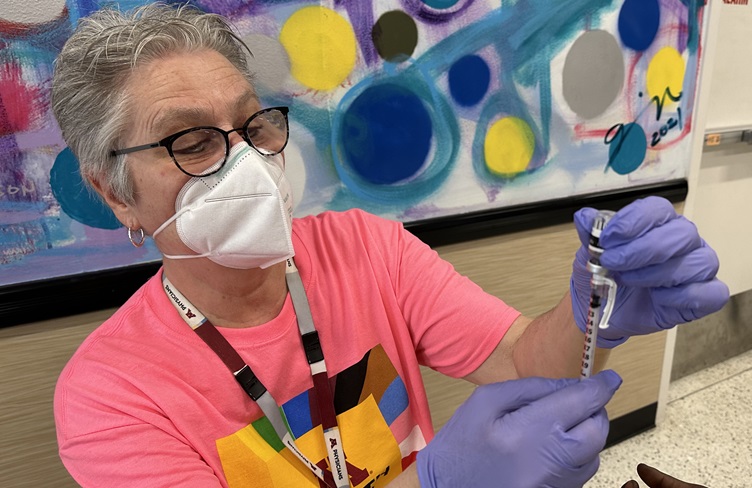
Mpox
What to know

Mpox is a rare disease caused by infection with the mpox virus. The mpox virus is part of the same family of viruses as smallpox and cowpox.
In this section
Symptoms
Rash
Mpox symptoms often include a rash that can look like pimples or blisters.
- You may have a rash or sores, or may have only one sore, bump, or blister
- This may look different from pictures you see online. A rash or sores can occur anywhere on the body.
Additional symptoms
- Fever or chills
- Swollen lymph nodes
- Headache
- Tiredness or fatigue
- Body aches (including muscle and back)
- Sore throat, nasal congestion, or cough
More information
Testing
You can only be tested for mpox if you have a rash. A sample of your rash will be collected with a swab.
Avoid touching your rash. Touching your rash can spread it to other parts of your body.
We encourage you to contact your health care provider if you:
- Develop a rash (bumps, sores, or blisters)
- Think that you might have mpox
- Think you were exposed to mpox
Insurance concerns
If you don’t have health insurance or a health care provider, contact the Red Door Clinic.
Vaccine and treatment
Vaccine
There are two vaccines available in the U.S. to prevent mpox.
The Minnesota Department of Health is working with local health departments and healthcare providers. Together they are working to vaccinate those at risk for mpox.
Treatment
There are no treatments specifically for mpox infections.
Health care providers may:
- Recommend an antiviral medication (TPOXX) to help people who are more likely to get very ill
- Offer ways to relieve pain or itchiness
If you think you may have been exposed to mpox, contact your healthcare provider to see if you are eligible for a vaccine to prevent or reduce mpox.
Most people get better without needing medical treatment.
How mpox spreads
How it spreads
Mpox:
- Mostly spreads through skin-to-skin contact including:
- Sex
- Hugging, kissing and cuddling
- Can be spread as soon as symptoms start. It can spread until the rash has fully healed and a fresh layer of skin has formed. This can take several weeks.
- Is not a sexually transmitted disease
- Can be spread to all people, regardless of gender identity or sexual orientation
- Has an increased risk for spreading at a rave, party, or club where there is minimal clothing and where there is direct, personal, skin-to-skin contact
- Is possible to be spread, although it is less likely, by items that have been in contact with a mpox rash such as:
- Unwashed linens or clothing
- Other surfaces
More information
Reduce your risk
Mpox can be spread to all people. We list the ways to reduce your risk of getting mpox.
When around someone with mpox
- Do not touch their rash or scabs
- Avoid kissing or having sex with them
- Do not share eating utensils or cups with them
- Do not handle or touch their bedding, towels, or clothing
- Use gloves and a mask when doing laundry and disinfecting their spaces
Prevention
- Avoid close, skin-to-skin contact with people who have a rash that looks like mpox
- While a friend or loved one has mpox, find non-contact ways to show your support, like air high-fives, or virtual dates
- Wash your hands often with soap and water or use an alcohol-based hand sanitizer
- When cleaning and doing laundry, use disinfectant and laundry detergent to kill the virus
- Avoid having sex with a person who may have mpox
Resources
Find resources and information by visiting:
Contact us
Health Department
Phone
Address
Public Service Center250 Fourth St. S., Room 510Minneapolis, MN 55415
Office hours
8 a.m. – 4:30 p.m.
Monday – Friday

